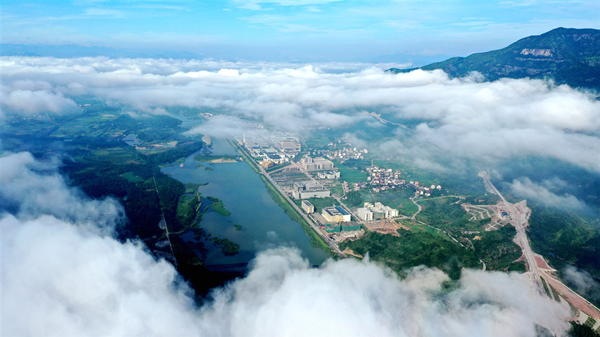Air, water pollution control see strong results in Zhejiang

An aerial view of Guanlu town, Xianju county in Zhejiang province when the sky clears up after rain. [Photo/IC]
Official data show that Zhejiang province has made remarkable achievements in reducing and preventing air and water pollution over the first six months of this year.
Between January and June, Zhejiang's prefecture-level cities saw their average density of PM 2.5 (fine particulate matter that causes smog) drop by 21.2 percent year-on-year to 26 micrograms per cubic meter. In addition, drinking water resources in all counties and cities in the province were considered safe 100 percent of the time throughout the six-month period of monitoring, 2.2 percentage points higher than the previous year.
Zhejiang set out an annual plan for 2020 to tackle exhaust emissions in 102 industrial parks and 1,000 industrial plants, as well as eliminate stench and unpleasant odor emitted from 43 industrial and municipal projects. As of the end of June, pollution treatment had been completed on 81.6 percent of the problematic industrial parks, 45.8 percent of the plants, and 42.5 percent of the odor-emitting projects.
Zhejiang also pledged to address air pollution through industrial restructuring, including relocating or closing down 26 high-polluting enterprises in urban areas, reducing the output of 1000 factories, and installing automatic monitoring systems for 263 major emitters of volatile organic compounds (VOCs) by the end of 2020. As of the end of June, relevant work had been completed on 65.4 percent of the enterprises in urban areas, 55.4 percent of the factories, and 81 percent of the VOC emitters.
To protect water resources in 2020, Zhejiang set an annual goal to build 100 rivers and lakes with a pleasant environment and superb water quality and comprehensively regulate 500-km-long waterways. As of the end of June, relevant work on 81 percent of the rivers and lakes as well as 70.8 percent of the waterways had been completed.

 Print
Print Mail
Mail
 Zhejiang Release
Zhejiang Release Zhejiang News
Zhejiang News